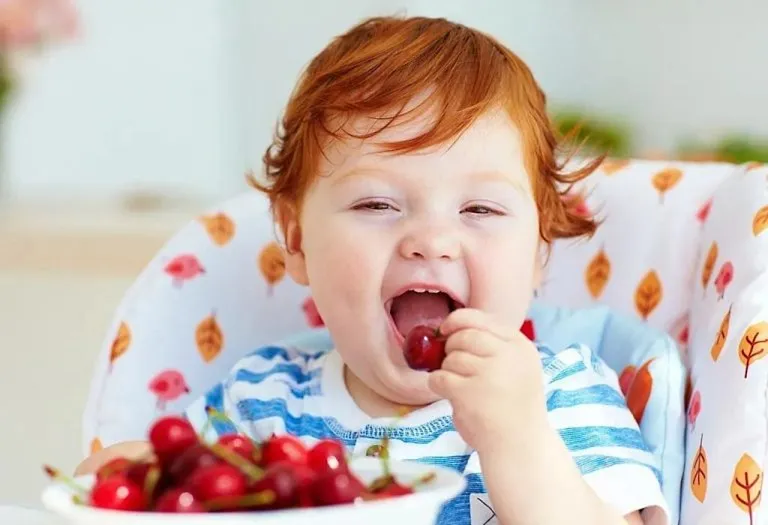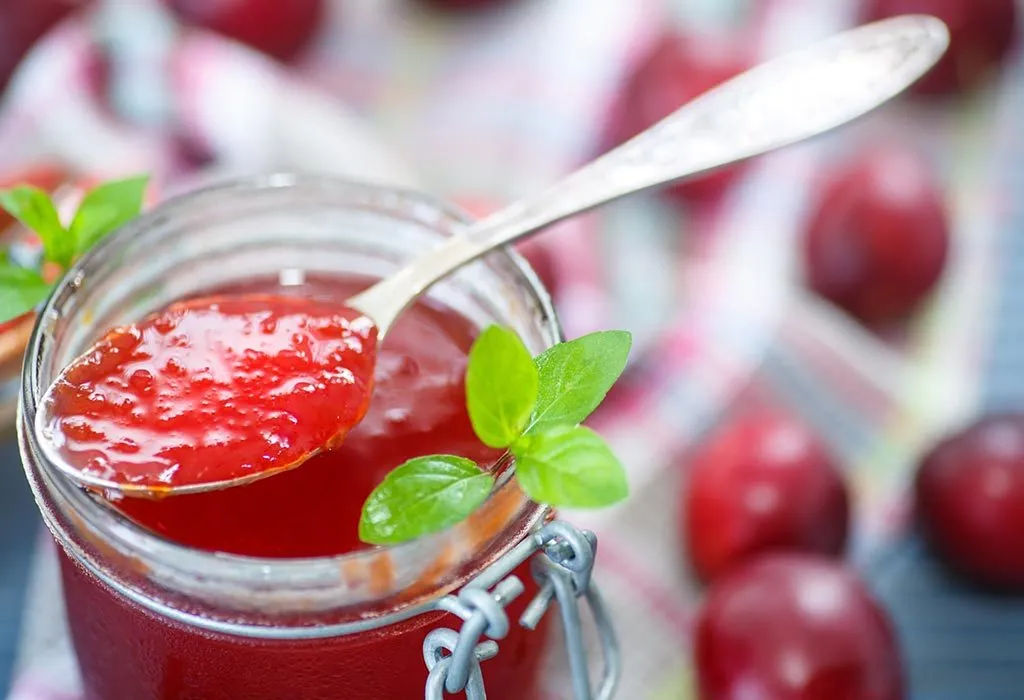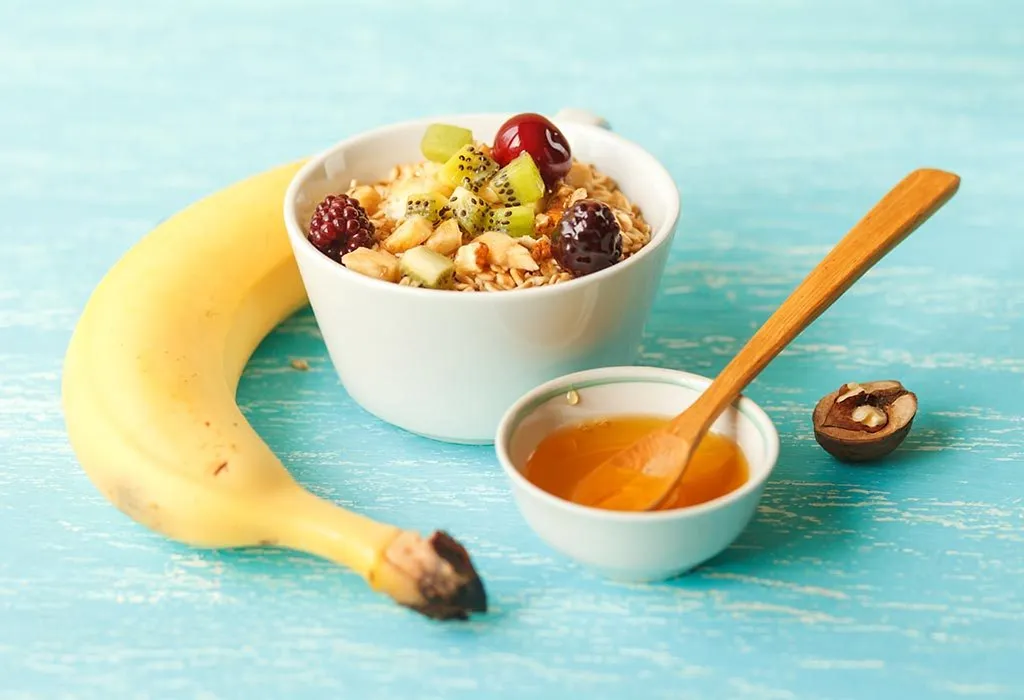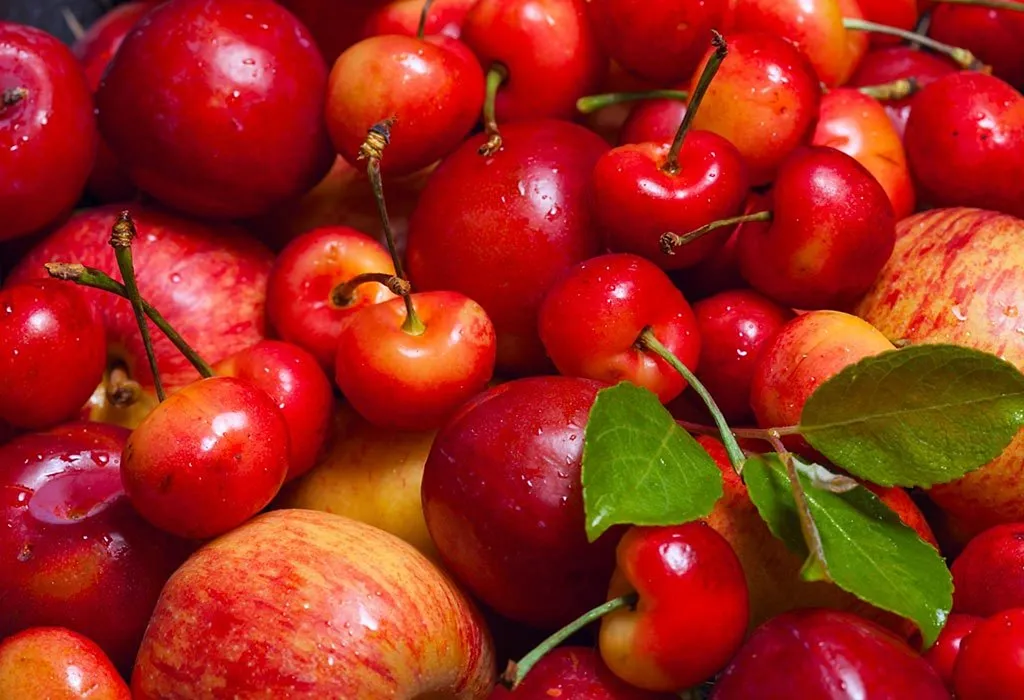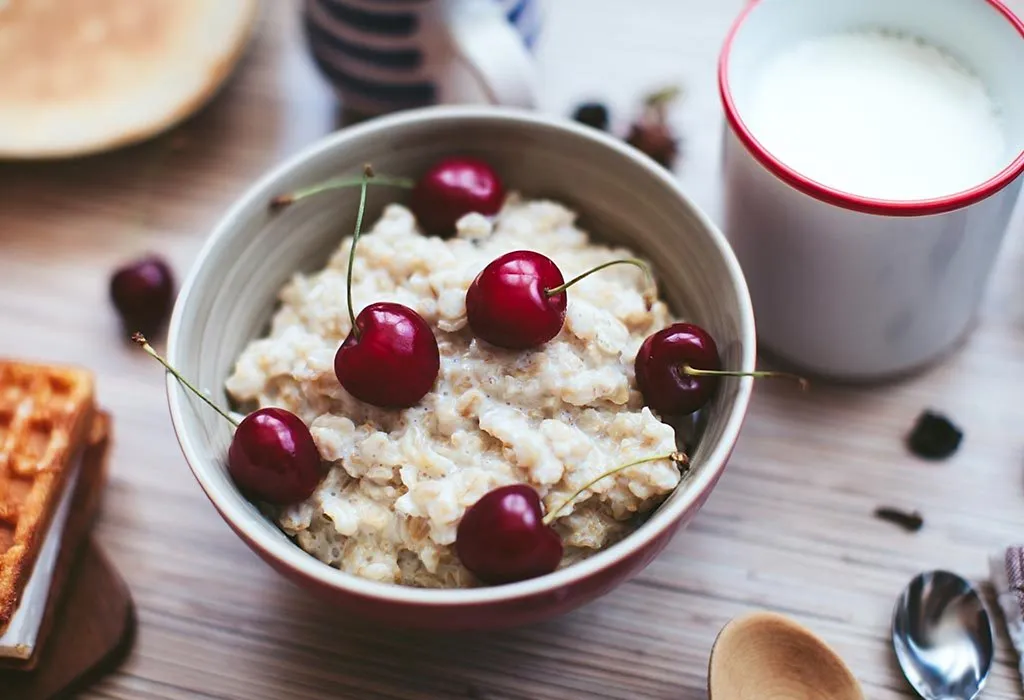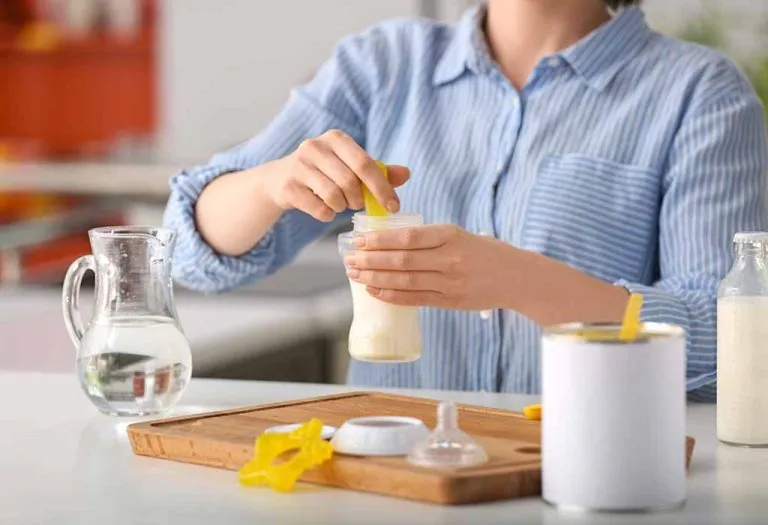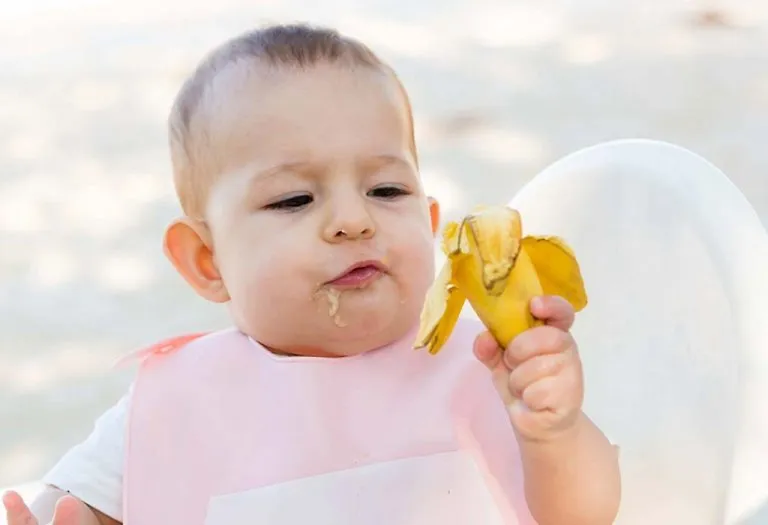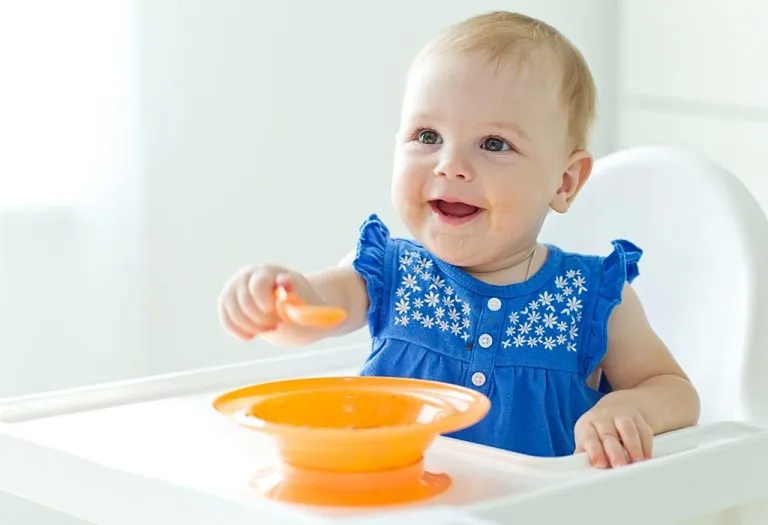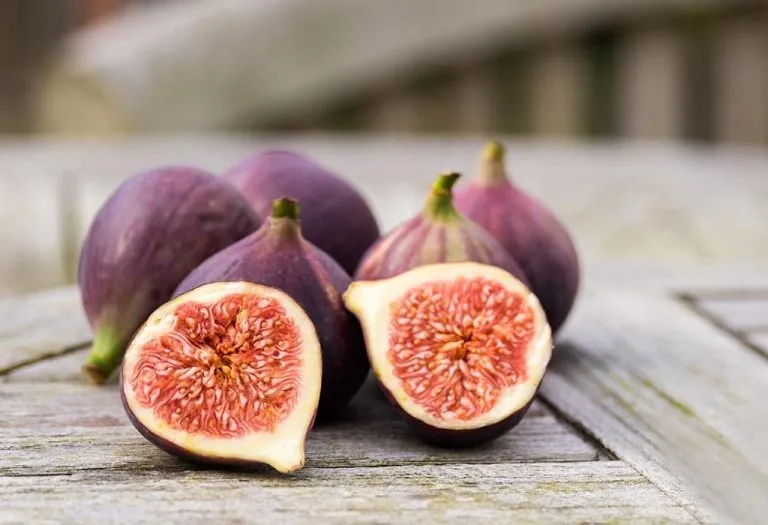Cherries for Babies – Health Benefits & Recipes

Cherries are delicious, sweet, and sure to be loved by kids, not to mention they offer a variety of nutritional benefits. However, it’s crucial to understand the appropriate time and method to introduce cherries to your child’s diet. This article aims to guide you through the process of incorporating cherries into your child’s meals, providing useful information on when it’s best to introduce them and what precautions to take. We’ll also explore some fun and easy recipes you can create with cherries. If you’re curious about whether cherries are safe for babies and at what age you can start feeding them, you’re in the right place. So let’s dive in and learn more about the wonders of cherries for babies and how they can be a healthy addition to your family’s menu.
Can Babies Eat Cherries?
Yes, you can introduce cherries into your baby’s diet once you’ve started solids, typically around 6 months of age. However, it’s best to offer them in a form that’s safe and easy for your baby to consume. Pureed or mashed cherries are a good starting point at this stage. You can add them to other fruit purees or baby cereal for added flavor and nutritional benefits.
When to Introduce Cherries to Infants?
An often-asked question is, “when can babies eat cherries”? It is best to introduce the fruit to an infant at 8 months. However, after consulting a Paediatrician, you can start giving her cherries once she starts with semi-solids at 6 months. As they contain citric acid, feed cherries in small portions and look out for possible reactions.
Nutritional Value of Cherries
Cherries are a good source of Beta-Carotene, Vitamin C and are absolutely free from fat, cholesterol and sodium. One ripe Cherry contains about 82% water. A cup of Cherries, about 150 grams approximately, will have about 85 – 90 calories. The same quantity of the fruit will contain about 3 gram of fibre and a little of calcium (36mg), protein (1.65gms) and iron (0.85mg) too. The Potassium content in a cup of Cherries is about 260 milligrams and it is also recognised as one of the best among the antioxidant-rich fruits. It controls the hormone Melatonin, which helps in regulating proper sleep cycle.
Benefits of Cherries for Babies
Cherries are considered to be a superfood since they are loaded with nutrients. Here are some of the benefits of cherries on babies.
- Cherries contain more beta-carotene than blueberries and strawberries. Hence, they increase a baby’s immunity, make the skin glow and keep the and eyes healthy.
- It contains a good amount of fibre which helps in preventing constipation and helps in proper bowel movement.
- The fruit is rich in antioxidants which help in the development and proper functioning of a baby’s brain.
- It prevents Anaemia since the fruit is rich in iron.
- The fruit regulates melatonin, a hormone which induces good sleep in babies who sleep less.
- Cherry is a juicy fruit and comprises about two-thirds of water. Therefore, eating cherries can keep the baby hydrated.
- The calcium content in cherries helps in the development of healthy bones.
- The anthocyanin content in cherries reduces inflammation and, thus, prevents aches and pain in the body.
How to Select and Store Cherries for Babies?
Always look for ripe and uniformly red coloured cherries with firm skin but they should not be hard when pressed. Avoid the ones with cuts, bruises, or with a stale, dry stem. Look for dark coloured ones since darker the colour, sweeter the cherry.
Fresh cherries should be wrapped in a plastic bag and stored in the refrigerator without washing. You can wash them just before you eat or use them. However, always remember to bring them out of the refrigerator a few hours before you eat them, as they taste best at room temperature.
How to Prepare Cherry Baby Food?
First of all, remove the stems of the Cherries and clean them thoroughly. In case you find too mushy or ones with nicks and blemishes, discard them. Then cut them in half and bend them to pit it. Once that is done with all the cherries, put them in a blender and make a puree. You can either puree it, leaving a few chunky pieces or blend it finely. The more you blend it, the more fluid it becomes. You can either feed this to your baby with a spoon or mix it with other food like applesauce or pear sauce and for older kids, you can mix it with chicken or in the porridge.
Can Your Baby be Allergic to Cherries?
Allergy from Cherries is quite rare but there are people who suffer from it. Especially if your baby happens to suffer from pollen allergy, then she may be allergic to cherries as well. Ingesting a cherry could lead to the Pollen-food allergy syndrome in which the mouth starts itching with or without a bit of swelling of the lips, tongue, palate, the throat, running nose and watery eyes. In very rare cases, a baby may suffer from severe symptoms like anaphylaxis, urticaria or gastrointestinal problems like vomiting, diarrhoea and stomach cramps.
Precautions to Take Before Giving Cherries to Your Child
There is no doubt about the goodness of Cherries and its nutritional content. However, you need to take some precautions before giving Cherries to your little one.
- It is imperative to check if your child has a pollen allergy. In case she does, cherries are a definite no-no.
- You can even consult an allergist and test for cherry allergy that your baby may have, under his supervision.
- If in case your kid’s test result is negative for cherry allergy, you can give her cherries but only after peeling the skin off since it is thick and difficult for babies to chew.
- For babies who have just started semi-solids, cherry puree is the best and for infants, you can cut them in thin strips and give them as finger food.
- Always remember to pit the cherries before giving it to your baby.
Side Effects of Cherries on Infants
When introducing cherries to infants, it’s essential to be aware of potential side effects. Below are some common side effects to consider when feeding cherries to your baby:
- Choking Hazard: Cherries contain pits and tough skins, which can pose a choking risk for infants. Always ensure cherries are pitted and cut into small pieces before serving.
- Allergic Reactions: Although rare, some infants may be allergic to cherries. Symptoms can include rash, hives, swelling, or difficulty breathing. Introduce cherries individually and observe for any adverse reactions.
- Digestive Upset: Cherries are high in fiber, which could cause gas, bloating, or diarrhea in some infants, particularly if consumed in large amounts.
- Stains and Mess: Cherries are deeply pigmented and can stain clothing and surfaces. While not harmful to the infant, this can be a concern for parents managing mealtime cleanup.
- Pesticide Residue: Cherries are among the fruits known to contain pesticide residues. It’s crucial to wash them thoroughly before serving to reduce exposure to chemicals.
How to Prepare Cherries for Baby-led Weaning?
Preparing cherries for baby-led weaning requires special attention to safety and appropriate serving sizes. Here’s how to prepare cherries for your baby at different stages of development.
1. For 6 to 9 Months
At this age, babies are just starting solids and exploring new foods. To safely introduce cherries, remove the pits and skins. Puree the cherries or mash them to a smooth consistency, making them easy for your baby to swallow. You can also mix the cherry puree into yogurt or oatmeal for added flavor and nutrition.
2. For 9 to 12 Months
As your baby becomes more comfortable with solid foods, you can start offering small, bite-sized pieces of pitted cherries. Cut each cherry into quarters or smaller, ensuring that there are no choking hazards. These small pieces can be offered as finger food for self-feeding practice.
3. For 12 Months and Up
By this age, your child should have better chewing skills. You can continue to serve pitted cherries in small pieces but can now cut them into halves instead of quarters. This stage is ideal for introducing cherries as a healthy snack or mixed into other dishes like fruit salads or smoothies.
4. For 36 Months and Up
By the time your child is three years old, they should be able to handle larger pieces of cherries. You can offer whole, pitted cherries as a snack, but always supervise them to ensure they eat safely. Cherries can be a great addition to a lunchbox or as part of a homemade dessert.
Cherry Recipes for Babies
Looking for cherry recipes for your baby? Here are 5 easy and simple recipes.
1. Cherry-Banana Mix
Do you know how to make cherry puree for a baby? Here is a pureed mix with the goodness of cherries with that of banana.
Ingredients
- Banana – 1
- Cherry – 2
- Rice cereal – 1/4th of a small bowl
How to Make
- De-stem and wash the cherries.
- Cut them in halves and pit them.
- Puree the banana and cherries together.
- Add the rice cereal and puree again.
2. Cherry-Apple puree With Yogurt
It is a mix of smooth yoghurt with cherry and apple puree for babies who have just started weaning.
Ingredients
- Apple – 1
- Cherry – 2
- Yoghurt – 4-5 tablespoon
How to Make
- Wash the apples, peel it and cut it in pieces.
- De-stem the cherries, wash it, peel it, pit it and cut it in pieces.
- Blend them together in a processor.
- Whip the yoghurt and mix it with the fruit puree.
3. Cherry and Oats Kheer
It is a wholesome food with an Indian twist.
Ingredients
- Cherry – 2
- Oats – 2-3 tablespoon
- Milk – 1 glass
- Honey – according to taste (optional)
How to Make
- De-stem and wash the cherry.
- Then cut them in halves and pit them.
- Cut them into pieces and make a puree in a blender.
- Boil the milk and add the oats in it.
- Once cooked and cooled, add the cherry puree, honey (optional) and mix them all together.
4. Cherry Smoothie
A rich and flavorful smoothie that combines the sweetness of cherries, the richness of honey and bananas and creaminess with milk.
Ingredients
- Cherries – 1 cup (pitted and de-stemmed)
- Milk – 1 cup (whole milk, almond milk, or other milk of choice)
- Banana – 1 (ripe, for natural sweetness and creaminess)
- Honey or Maple Syrup – 1 teaspoon (optional, for additional sweetness)
How to Make
- Wash the cherries, remove the stems, and pit them.
- Place the cherries, milk, and banana into a blender.
- Blend on high until smooth and creamy. If needed, add more milk to achieve your desired consistency.
- Taste the smoothie; if you want it sweeter, add honey or maple syrup to taste, and blend again to combine.
- Pour into a glass and serve immediately.
5. Cherry Jam
Are you wondering about cherries for a 6-month-old? This homemade cherry jam recipe, with minimal ingredients, is designed to be safe and enjoyable for babies.
Ingredients
- Cherries – 2 cups (pitted and de-stemmed)
- Lemon Juice – 1 tablespoon
- Water – 1/4 cup
How to Make
- Wash the cherries thoroughly, remove the stems, and pit them. Chop the cherries into small pieces for easier cooking and smoother texture.
- Place the chopped cherries, lemon juice, and water in a small saucepan over medium heat. Stir occasionally to prevent sticking.
- Once the mixture begins to boil, reduce the heat to low and let it simmer for 15 to 20 minutes, or until the cherries are soft and the liquid has reduced. Use a fork or a potato masher to break down the cherries to the desired consistency.
- Once the jam has reached a smooth consistency, remove it from the heat and let it cool completely. Pour the jam into a clean, sterilized jar or container with a tight-fitting lid.
- You can serve the cherry jam immediately or refrigerate it for up to one week. It’s great as a spread on baby-friendly bread, stirred into yogurt, or mixed into oatmeal.
FAQs
1. Can cherries cause an allergic reaction in babies?
While uncommon, cherries can cause allergic reactions in some babies. Symptoms may include rash, hives, swelling, or difficulty breathing. If you suspect an allergy, discontinue use and consult a healthcare provider. To minimize risk, introduce cherries as a single ingredient and wait a few days before introducing other new foods.
2. Can I use canned or jarred cherries for my baby?
Canned or jarred cherries often contain added sugars, preservatives, or syrups that are not suitable for babies. It’s best to use fresh or frozen cherries without added sweeteners or artificial ingredients. If you must use canned or jarred cherries, look for those packed in water or natural juice and rinse thoroughly to remove any excess sugar or additives before serving.
3. How do I store cherries for my baby’s meals?
To ensure cherries stay fresh and safe for your baby, store them in a refrigerator in a breathable container or bag. If you have a large batch, you can also freeze them for longer-term storage. To freeze, wash, pit, and cut the cherries into smaller pieces, then lay them flat on a baking sheet to freeze. Once frozen, transfer them to a freezer-safe container for up to 6 months.
This was all about cherries for babies. Include cherries in your baby’s diet and add an extra nutritional punch to it. You can even include cherry juice for babies. It will not only help in the overall development and good health of your baby but will also add an extra taste to your baby’s everyday food.
References/Resources:
1. Constipation; Children’s Minnesota; https://www.childrensmn.org/educationmaterials/childrensmn/article/15343/constipation/
2. Cherries, sweet, raw; Food Data Central; U.S. Department of Agriculture; https://fdc.nal.usda.gov/fdc-app.html#/food-details/171719/nutrients
3. Cherry; Solid Starts; https://solidstarts.com/foods/cherry/
4. Faienza. M, Corbo. F, Carocci. A, Catalano. A, et. al.; Novel insights in health-promoting properties of sweet cherries (Journal of Functional Foods); National Library of Medicine; https://www.ncbi.nlm.nih.gov/pmc/articles/PMC8376227/; April 2020
5. Gonçalves. A, Nunes. A, Flores-Félix. J, et. al.; Cherries and Blueberries-Based Beverages: Functional Foods with Antidiabetic and Immune Booster Properties; MDPI; https://www.mdpi.com/1420-3049/27/10/3294
6. Howatson. G, Bell. P, Tallent. J, Middleton. B, et. al.; Effect of tart cherry juice (Prunus cerasus) on melatonin levels and enhanced sleep quality (European Journal of Nutrition); National Library of Medicine; https://pubmed.ncbi.nlm.nih.gov/22038497/; December 2012
7. Feeding Your Baby: The First Year; Cleveland Clinic; https://my.clevelandclinic.org/health/articles/9693-feeding-your-baby-the-first-year
Dry Fruits for Babies
Strawberries for Infants
Dragon Fruit for Infants
When and How to Introduce Avocados to Infants?
Was This Article Helpful?
Parenting is a huge responsibility, for you as a caregiver, but also for us as a parenting content platform. We understand that and take our responsibility of creating credible content seriously. FirstCry Parenting articles are written and published only after extensive research using factually sound references to deliver quality content that is accurate, validated by experts, and completely reliable. To understand how we go about creating content that is credible, read our editorial policy here.






